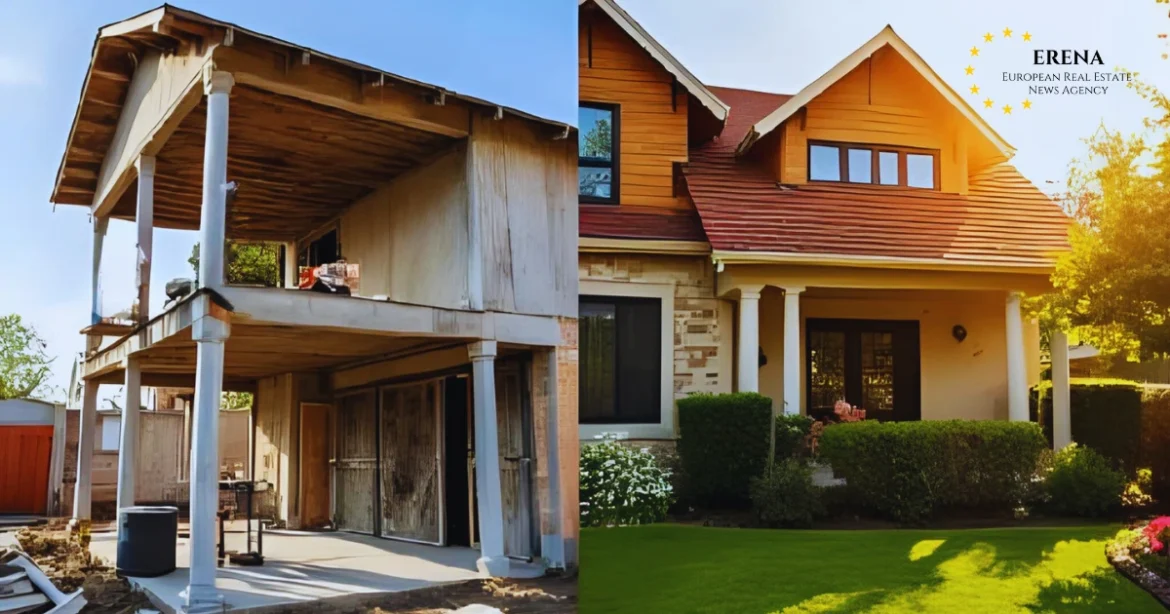Real estate investors in 2025 are operating in a tougher but clearer market. Financing costs in the euro area have fallen from their 2023 peak yet remain above pre-2022 levels, while rental growth in some capitals has cooled. The trade-off this year is speed compared to certainty. Fresh data suggests flipping profits are thinner and more timing-sensitive, whereas buy and hold still benefits from a positive spread between mortgage costs and gross yields in several European cities.
Financing conditions in 2025
The European Central Bank kept policy rates on hold in September 2025, with the composite cost of new loans to households for house purchase at about 3.3% across the euro area. Typical mortgage pricing in mid-2025 sits roughly in the 3.1–3.6% band depending on country. In the United Kingdom, asking prices in September posted their first annual drop since early 2024, and annual rent growth slowed to its weakest pace in four years at just 2.4%. This cooler backdrop limits upside for flippers while easing affordability pressure for tenants. In the United States, financing has been broadly stable in 2025, but the more material story for flippers is shrinking profit margins rather than rates.
Fix and flip profits under pressure
In Q1 2025, the typical US flip sold for about $325,000 (≈ €276,000) after a purchase near $260,000 (≈ €221,000), generating a $65,000 gross profit and a ~25% gross ROI before expenses. The average holding period was about 164 days, just under six months. These headline profits do not account for renovation costs, taxes, financing charges, and broker fees, which can easily consume 20–30% of resale value. For many operators, this reduces gross profit of €55,000 to near break-even.
Where flips still work in 2025
-
Entry price points below ~€225,000 in active secondary cities
-
Properties with clear value-add such as energy upgrades or reconfigured layouts
-
All-cash or very cheap bridge financing to minimize carrying costs
Without these conditions, rising renovation standards and slower resale cycles compress margins further.
Buy and hold income and resilience
The appeal of buy and hold in 2025 lies in the spread between gross yields and mortgage costs. With euro-area mortgage rates near 3.3%, many European markets still deliver gross yields between 4.5% and 6.5%. A €250,000 apartment in a 5% yield market generates about €12,500 annual rent. After vacancy and operating costs, net operating income is roughly €9,200. With 70% financing at ~3.3–3.5% interest, annual debt service of ~€5,800 leaves a 5–6% net cash yield on equity, plus potential appreciation.
European hotspots in 2025
-
Warsaw: Average gross yields ~6.2%, among the strongest in the EU. Limited new housing and strong demand keep Warsaw at the top of buy-to-let destinations.
-
Bucharest: Average gross yields ~6.3%, with smaller flats often higher. Attractive returns but with regulatory risks.
-
Athens: National yields average 4.6%, with Athens around 5%. Supported by tourism but shaped by tighter rules on short-term rentals.
-
Lisbon and Porto: Portugal averages ~4.6% gross yields. Suburban areas can reach 6–7%, while central districts are lower.
-
London and Paris: Prime districts typically show below 5% gross yields. London averages about 4.3%, Paris around 4.6% nationally but lower in the capital. These markets attract investors for liquidity and prestige rather than yield.
Buy and hold compared to fix and flip in 2025
| Factor | Buy and Hold | Fix and Flip |
|---|---|---|
| Profitability | Many capitals show ~4.5–6.5% gross versus ~3.3% borrowing costs | €55k gross profit per deal in US Q1 2025 before costs; net margins thin |
| Risk level | Lower, backed by rental demand and leverage spreads | Higher: cost overruns, resale timing, and regulatory drag |
| Time horizon | Long-term, multi-year | Short-term, ~4–6 months per project |
| Best locations | Warsaw, Bucharest, Athens, Lisbon suburbs | Secondary cities with undervalued stock and energy-upgrade potential |
| Regulatory pressure | Rent caps and short-let rules in some markets | Stricter renovation and energy-efficiency standards raise costs |
Speed compared to certainty
The message from 2025 data is clear. Flipping offers speed but fragile profits as costs and timelines bite. Buy and hold offers steadier cash flows where gross yields outpace borrowing costs, with upside if rents rise further into 2026.
Expert outlook
Analysts expect moderate rental growth into 2026, underpinned by limited new supply. If central banks begin easing rates, leveraged landlords could see margins improve. In the US, flip volumes in early 2025 dropped to their lowest since 2018, showing many investors are already pulling back. The consensus is that flipping rewards nimble operators, but steady landlords are better positioned this year.
The 2025 verdict
On balance, buy and hold wins in 2025 on a risk-adjusted basis. Rental yields remain attractive relative to mortgage rates, while flipping requires exceptional execution to protect margins. For most investors, patience and prudent leverage beat speed and speculation.

